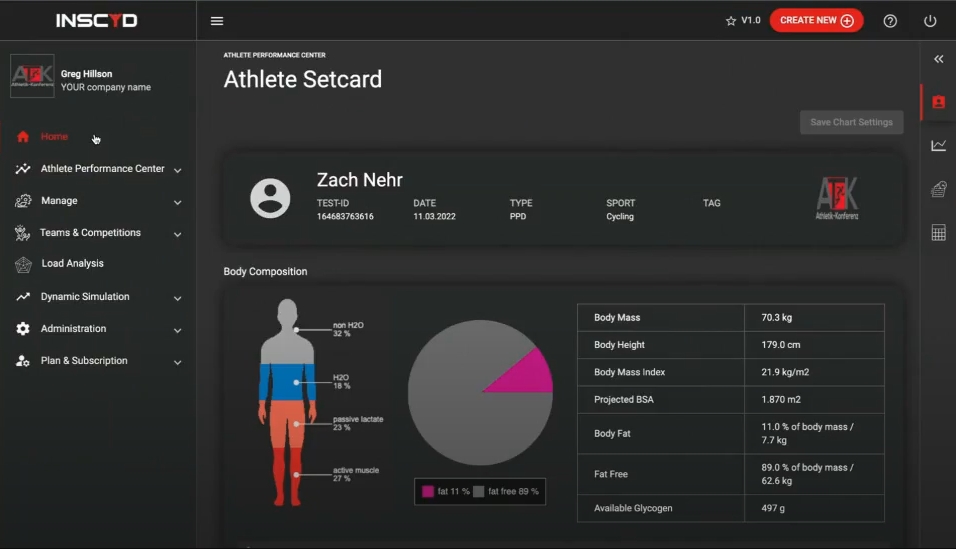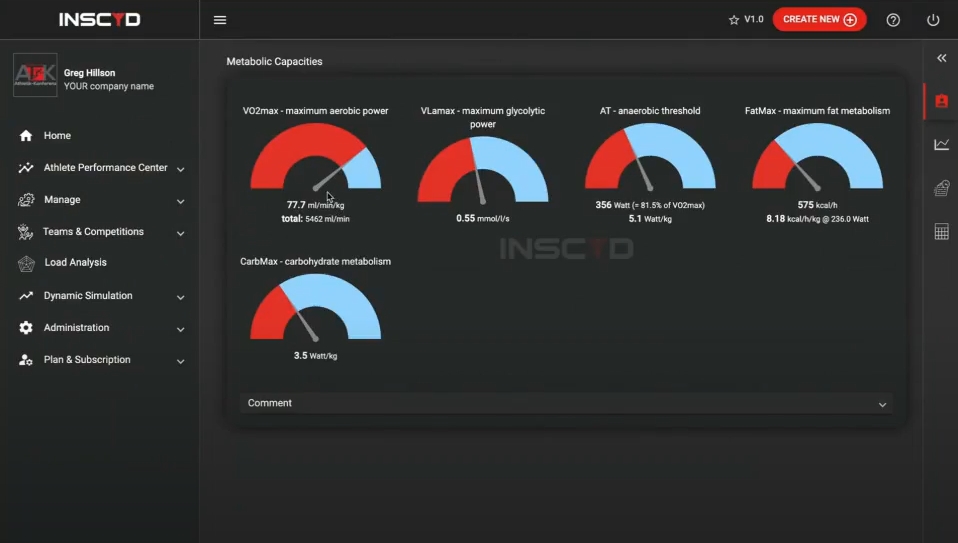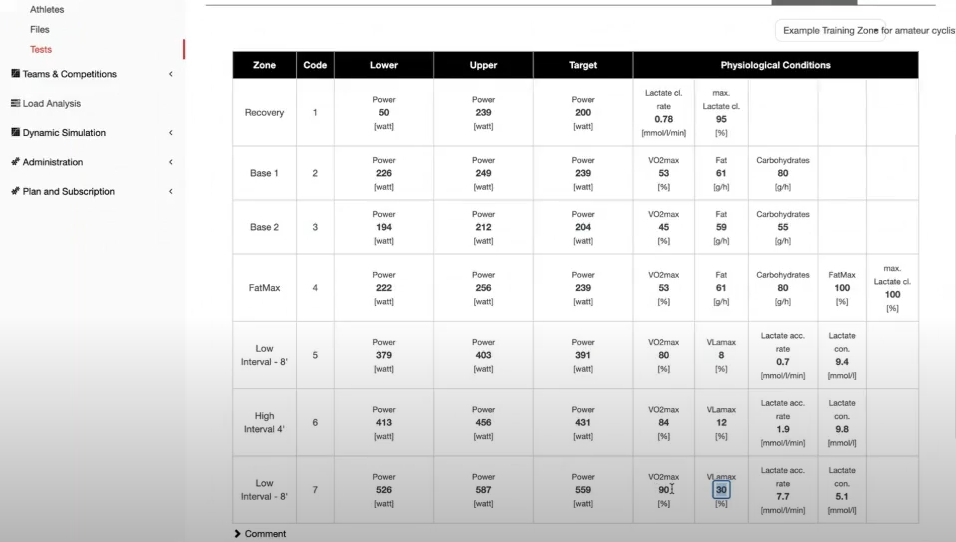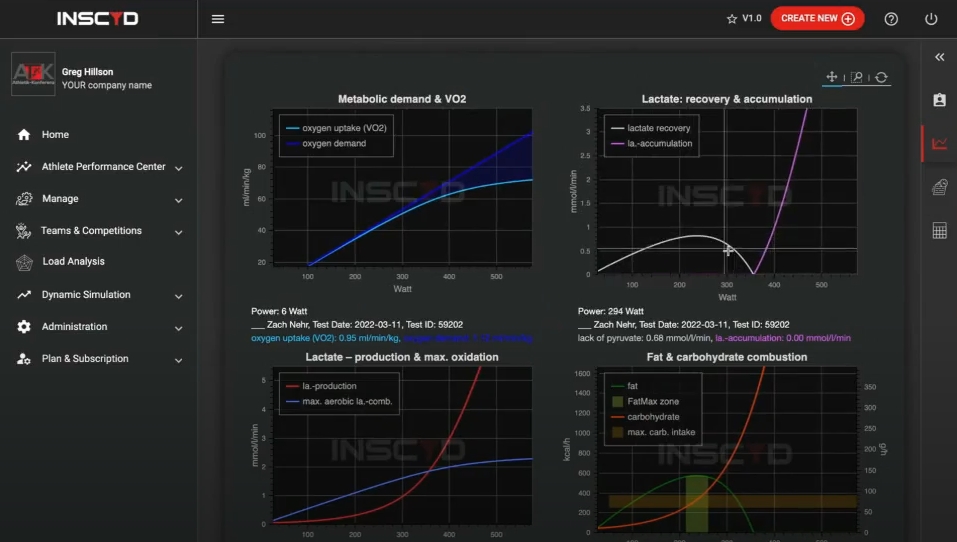What is INSCYD?
We take a deep dive into the physiological analysis software used by Wout van Aert, Mathieu Van der Poel and more

A few weeks ago, I had the opportunity to try out INSCYD Performance testing, the same as used by Jumbo-Visma, Alpecin-Fenix, Team Movistar, and other professional teams across endurance sports. To say I was excited would be quite an understatement – this test is used by Wout Van Aert and Mathieu Van der Poel. Does it get any better than this?!
In undertaking the test, I wanted to see how I stacked up against the world’s best... just kidding, I know that I am a long way off. But in truth, I did want to see what all the hype was about. When I first heard about INSCYD back in 2018, it had only been around for a few years. It seemed like the testing was kept relatively quiet, but the best coaches were using it.
The specific protocol sounded brutal, but the numbers it spits out were supposedly like no other. VLamax, VO2max, anaerobic threshold, Fat Max and Carb Max… The list went on and on, and I was more than intrigued.
Fast forward to 2022, and I got to try it out for myself. I met with the head of partnerships at INSCYD, who walked me through the entire process. Not only did I learn about my current physiological capabilities, but I also learned about my specific strengths and weaknesses. I even learned how to fuel my work and exactly how much fuel I was burning at a specific power output. After all was said and done, the INSCYD numbers blew my mind.
What is INSCYD?
Surprisingly, the name INSCYD - pronounced 'inside' - is not an acronym, but rather an aesthetic play on words. IN means inside, and SCYD means built on science.
Specifically, INSCYD is an athletic performance software used to analyse and plan endurance performance in athletes. It is a holistic tool that is much more thorough than a 20-minute FTP test, creating a “granular analysis of the physiology of an athlete,” and allowing them to create highly specific and individualised training programs.
Translation: INSCYD tells you what your exact strengths and weaknesses are, and how to train each part of your physiological system.
Get The Leadout Newsletter
The latest race content, interviews, features, reviews and expert buying guides, direct to your inbox!
INSCYD also claims to be the only test that accurately measures VLamax, a crucial performance metric that we’ll discuss in detail below. Uniquely, INSCYD also takes into account gender specificity, whereas FTP does not. Studies have shown that men and women have different levels of lactate distribution and adipose tissue, which means that their training programs and interval sessions might not be exactly the same.
Perhaps the best part of INSCYD is that it is essentially a take-home lab test. Instead of paying thousands of dollars and driving or flying to a performance testing lab, you can measure your VO2max, VLamax, Threshold, and more using the INSCYD test – by the way, you only need a power meter to complete the INSCYD testing protocol.

How it works
Of course, we don’t know exactly how INSCYD works, because that’s the secret of the software program. What we do know if that INSCYD takes a small amount of physiological test data and turns it into arguably the most comprehensive athletic profile one could achieve outside of a lab.
In total, INSCYD measures: VO2max (aerobic power), VLamax (glycolytic power), anaerobic threshold (maximal lactate steady state), economy, fat combustion, carbohydrate combustion, fatigue & recovery, and energetic contributions.
We won’t dive into the details of each and every metric in this article, but you can check out INSCYD.com for more information. Each metric has its own web page complete with definitions, examples, charts, graphs, and videos to help you understand exactly what we’re talking about. It’s like taking a graduate-level exercise testing class for free.
What’s most important is how these metrics relate to you – the athlete – and how you can use them to understand your strengths and weaknesses, as well as guide your training.
Specifically the software can provide performance projections, an athletic profile, performance tracking and comparison, as well as comprehensive training zones. Translated, you can use INSCYD to overhaul your training zones and program using (according to INSCYD's marketing) the “most advanced tool to analyze and plan endurance performance in athletes.”
So let’s put it all together, using me as the guinea pig. Below, we will see the INSCYD software in action, and how it helped me re-write my training program, dial in my threshold and power zones, and reveal my strengths and weaknesses in a way that I’d never seen before.

My experience with INSCYD Performance Testing
I met with Greg Hillson, head of partnerships at INSCYD, who took me through the INSCYD protocol from start to finish. It was a fascinating experience, as I had never seen the software apart from the occasional YouTube video.
But first, I had to complete the infamous INSCYD power test.
The test(s) consist of four efforts: 20-second sprint, 3-minute max effort, plus a 6-minute effort, and a 12-minute effort. All of these efforts were to be done seated and on the indoor trainer, and the power numbers would be taken from an on-bike power meter, not the smart trainer. You can complete these tests in one or two days, and the goal is to be completely fresh. Within the ride, each effort was separated by 15 minutes of easy spinning.
I chose to complete the tests all in one day, a painful and lung-bursting day, and I was glad when it was over. I sent the power files to Greg and we met a few days later to look over my data. Here is what I learned.
Why my INSCYD data matters
INSCYD data reveals facts about our physiology that we’ve likely never seen before. For example, some of us may not realize that we have a weak aerobic engine, or that our VLamax is too low for us to be an elite sprinter.
It is also true that INSCYD is the easiest testing protocol for endurance athletes, and especially amateurs. Power is the only data needed, so there is no need for lactate meters, heart rate monitors, or a lab setting. INSCYD also provides the most accurate threshold measurement compared to “flawed FTP calculations” that come from a 20-minute power test or a ramp test. Let’s use my data as an example.
Based on the INSCYD algorithm, my anaerobic threshold was 356w – I had been using 372w for the last few weeks, based on a ramp test (result of 370w) and a separate 20-minute power test (398w for 20 minutes) on the indoor trainer.
Big difference.
Greg explained that this is pretty typical, that riders often find their actual anaerobic threshold to be significantly lower than they previously thought based on a ramp test or 20-minute effort. The reason for this is that the two aforementioned tests can be manipulated by significant anaerobic contributions within the effort. In other words, a ramp test or 20-minute power test may not be the most accurate measure of the aerobic system, despite being what most cyclists use exclusively to guide their training.
It is easy to get sucked into the number on our FTP. Of course, we want it to be higher, because it means that we have gotten stronger. But there is a danger in over-estimating our FTP, and that is putting us at risk for injury or burnout. If our FTP is set too high, you may not be targeting the systems that we think we are – our body is working harder than we think.
For example, if you overestimate your FTP by 10w, then your Threshold intervals might actually be VO2max intervals. Or your Zone 2 endurance rides could actually be low Zone 3 Tempo rides.
For elite athletes that train over 15 hours per week, these differences quickly add up.

In my N=1 study, I lowered my FTP in the subsequent weeks after the INSCYD test, and found that I was riding better than ever. My easy rides were easier, and my harder rides were harder. I targeted a lower power on my Zone 2 endurance rides (240w versus 270w), and my race results kept getting better and better.
I also learned more about my strengths and weaknesses through the INSCYD testing, which meant that I could better tailor my training to focus on specific aspects. That meant improving my sprint and anaerobic power output.
My VLamax was measured at 0.55 mmol/l/s according to INSCYD, meaning that I am an all-rounder with a solid punch, but also the ability to sustain power for longer periods of time. Either way, I am definitely not a pure sprinter, nor am I a long-distance gravel racer.
VLamax is defined as your maximum glycolytic power, or how quickly you can produce lactate, governing the percentage of VO2max you can utilise at threshold. In general, sprinters have a VLamax around 0.7mmol/l/s, whereas GC-style riders such as climbers will have a VLamax closer to 0.3 mmol/l/s.
I asked Greg for some tips on intervals, and how I can use the INSCYD data to come up with better workouts. He took me back to the “Lactate: accumulation and recovery” graph, and showed me how to use the curve to target specific power outputs. For threshold training, that meant 4x15-minute repeats at 390w, which is just above my aerobic threshold of 356w, accumulating lactate at a rate of ~0.6mmol/l/min.
This target power output would see me accumulate a significant amount of lactate over the course of 15min (0.6 x 15 = 9mmol of lactate), while we know from my INSCYD testing data that my peak lactate concentration is 15-16mmol. That means that I can comfortably complete four repeats at 390w without completely filling up my body with lactate and pushing myself over the limit.
For longer endurance rides, the INSCYD data suggested that I use 215w-260w as my target, with longer rides on the lower end of that zone, and shorter rides on the higher end. This is also known as my Fat Max zone, or the point at which my body is mainly utilising fat for energy and clearing lactate at a very efficient rate.
From the INSCYD data, I could even see such detailed stats as how many calories I am burning at a specific power output, and what percentage of that expenditure comes from carbohydrates. In my Fat Max zone, for example, I utilise 60-100 grams of carbohydrates per hour, and I can use this to specifically plan my training and nutrition strategies for training and racing.
Only a few weeks in, I can already feel the difference.
The Success of INSCYD
INSCYD’s reputation speaks for itself. I’m not sure I could name any other product (besides rice and oatmeal) that is used by so many different endurance athletes, across different sports and different teams, including the best athletes in the world.
Team Jumbo-Visma has proven itself as one of the best cycling teams in the world, and they have been using INSCYD testing for years with their riders, including Sepp Kuss and Wout Van Aert. The coach of Jan Frodeno, arguably the best IronMan athlete in the world, uses INSCYD testing, as well Marco Pinotti, Performance Coach at Team Bike Exchange-Jayco.
The list of INSCYD users is long and impressive and includes other top cycling teams such as Team Movistar and Alpecin-Fenix. In addition to cycling, there are many other teams and organisations that use INSCYD, including the German Skiing Federation, UC-Santa Barbara, the Belgian Royal Speed Skating Federation, the Singapore Swimming Association, and the Irish Sailing Association.
It goes without saying that they must be onto something.
Should you try INSCYD?
INSCYD is a very thorough piece of training software that provides arguably the best physiological profile of you, the athlete. Because it is ‘the best,’ it is expensive, and you’ll have to find an INSCYD coach to go through the testing – you can’t just complete the test on your own and plug in your numbers for free.
For a few hundred dollars, you can get access to all of the above metrics and more, and tailor your training more precisely than ever before. This makes INSCYD geared towards elite endurance athletes rather than the weekend warrior. Of course, anyone can try out the testing and use it for their training, but if you’re only riding five hours a week and half of your training is group rides, then INSCYD testing probably isn’t for you.
On the flip side, INSCYD could be a game-changer for all types of endurance athletes, from cyclists and triathletes to swimmers and runners. What INSCYD provides is unlike any other tool currently on the market, and you’ll probably learn some things about your physiology for the very first time.
With INSCYD, not only will you measure your current fitness and overall progress, but you will also get a deep insight into your strengths and weaknesses as an endurance athlete, as well as your utilisation of different substrates at varying power outputs. No other power test can tell you how to fuel your workouts and the amount of carbohydrates you are using at a certain effort level.
INSCYD helps you pinpoint your exact training zones, from Fat Max and Anaerobic Threshold, to VO2max and Carb Max. Perhaps the most unique metric measured by INSCYD is VLamax, or the maximum rate at which you can produce lactate. Using the metrics revealed by INSCYD numbers, you can craft a training program that is more precise and effective than ever before.
Zach is a freelance writer, the head of ZNehr Coaching, and an elite-level rider in road, track, and e-racing. He writes about everything cycling-related, from buyer's guides to product reviews and feature articles to power analyses. After earning a Bachelor’s Degree in Exercise Science at Marian University-Indianapolis, Zach discovered a passion for writing that soon turned into a full-fledged career. In between articles, Zach spends his time working with endurance athletes of all abilities and ages at ZNehr Coaching. After entering the sport at age 17, Zach went on to have a wonderful road racing career that included winning the 2017 Collegiate National Time Trial Championships and a 9th place finish at the 2019 US Pro National Time Trial Championships. Nowadays, Zach spends most of his ride time indoors with NeXT eSport.